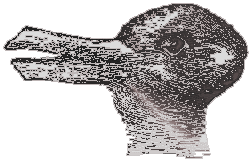 Gregory Eiselein
Gregory Eiselein Gregory Eiselein
Gregory Eiselein
The Basic Assignment (In Four Easy Steps).
1. Choose one of the following texts:
Gertrude Simmons Bonnin, "Impressions of an Indian Childhood"
Bonnin, "The Schooldays of an Indian Girl"
Bonnin, "An Indian Teacher among Indians"
Adah Isaacs Menken, any of the poems on our reading schedule
Any of the Mexican-American cowboy songs on our reading schedule
W. E. B. Du Bois, "Of Our Spiritual Strivings," from The Souls of Black Folk
Carlos Bulosan, "Be American"
Bulosan, "Homecoming"
2. Find something in that text that needs explaining. That something could be any of the following: a confusing passage or theme, a difficult idea, a reference or allusion to some aspect of the author's ethnic heritage or culture, a reference or allusion to some aspect of the culture or history portrayed in the text, a literary or philosophical allusion that may not be recognized by most readers, a reference to a historical event or context that contemporary readers may not know about, the form of the text, or the function of that text in its original cultural or historical context. We'll talk about specific examples in the next few class periods.
3. Explain the something you've found. In clear, concise prose, explain to us what this something is: explicate or clarify the passage; explain the difficult idea in terms we can understand; research the reference or allusion so that you can provide us with historical or cultural information that will help us better understand the text; carefully analyze the form so that you can break it down and describe it for us in detail; or investigate the original function of the text and summarize your findings for us.
4. Use your explanation to interpret the selected text. This is a crucial part of the assignment. Use your analysis and/or research to help us understand the text as a whole. How does better understanding the selected passage, theme, idea, reference, allusion, formal structure, or historical function help us to better understand the overall meaning, importance, or purpose of the text? What does your explanation of the selected passage, theme, idea, reference, allusion, formal structure, or historical function enable us to see or realize that we might otherwise miss or overlook in the text?
What I'm Looking For. To do well on this assignment, you'll need to make sure you do the following:
Find something that needs explaining. Don't choose something well known or obvious.
Explain that passage, theme, idea, reference, allusion, formal structure, or historical function clearly and concisely.
Make a specific and interesting interpretive claim about the text as a whole. (A claim is a "thesis." It should be arguable and provable.)
Support your claim using your explanation of something and well-chosen direct references to the text.
Explain your interpretation of the text, especially the direct references to the text, clearly and persuasively.
Organize your paper in a way that makes it easy to follow. Don't devote more than half of the paper to your explanation of the selected passage, theme, idea, reference, allusion, formal structure, or historical function.
Document your sources using MLA guidelines, if you've relied on research, which may be necessary for most of you.
Documentation. To support your views, you need to refer directly to the text you are examining. You will also need to cite and provide the sources for any research you've used. Please use a works cited page to acknowledge your sources. I ask that you please use the format suggested by the MLA Handbook for Writers of Research Papers, 6th edition, by Joseph Gibaldi. A key feature of MLA documentation form is the use of a parenthetical reference to author's last name and page number, keyed to the works cited page, to identify quotations and information drawn from sources. For example:
"Judith" describes in lurid detail Holoferne's severed head and "the long black hair clinging to the glazed eyes" (Menken 52).
You can find the MLA Handbook at the K-State Union or the library; the library also provides a single sheet handout that explains the MLA format for citation of work by others. If MLA documentation style is new to you or you don't understand it, please drop by to see me well before the paper's due date.
Length: Three typed, double-spaced pages
Due Date: Thursday, February 12
Let's Talk. This is supposed to be a quick and to-the-point assignment. Find something in a text. Explain it. Tell us why it is important to the overall significance of the selected text. This paper is not revisable (though the next one will be), and there won't be any writing workshop or required paper conference connected to it. So, if you have any questions or concerns about your paper, please feel free to drop by the office to talk with me about it. I'll, of course, be in my office during office hours (Tu Th 10:30-11:20, Fri 9:00-10:00). If those times don't fit with your schedule, I am always happy to set up some other time to meet with you.
Home | Department of English | Graduate Studies | Cultural Studies | Sex and the Body Politic | Kansas State University |
This page was updated on 26 January 2004. Other pages on this site may have been updated more recently.
These pages are copyright © 1995-2004 Gregory Eiselein.